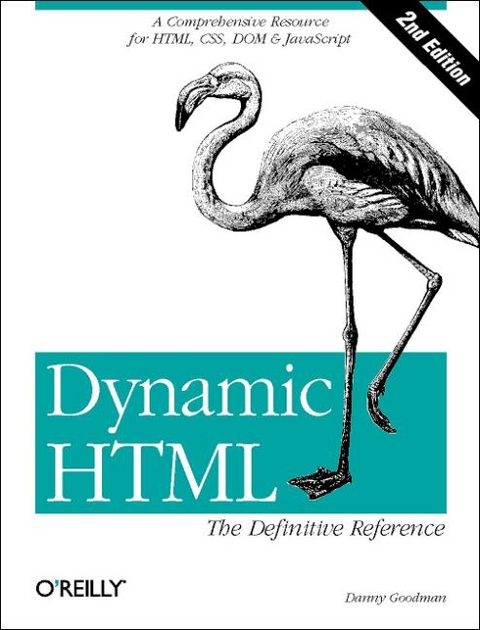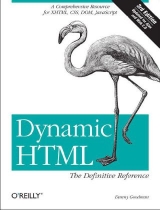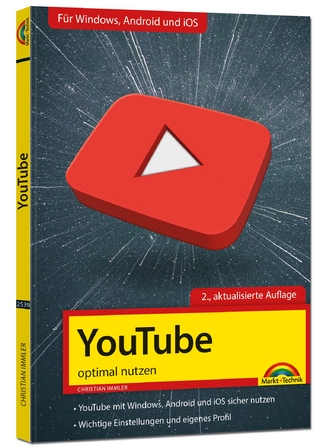
Dynamic HTML: The Definitive Reference
O'Reilly Media (Verlag)
978-0-596-00316-6 (ISBN)
- Titel erscheint in neuer Auflage
- Artikel merken
This volume contains everything you'll need in order to create functional cross-platform Web applications. This edition has been updated to cover the latest specifications, including HTML 4.01, CSS Level 2, DOM level 2, and JavaScript 1.5, as well as the latest browsers, Internet Explorer 6 (Windows), Internet Explorer 5.1 (Mac), Netscape Navigator 6 and 7, and Mozilla 1.0. You'll learn how these standards and technologies relate to one another and how the creation of Dynamic HTML content relies on these four technologies. The book includes: a complete reference for all of the HTML tags, CSS style attributes, document object model attributes, methods, and event handlers, and core JavaScript objects supported by the various standards and the latest versions of Netscape and Internet Explorer. Cross-referenced indexes that make it easy to find interrelated HTML tags, style attributes, and document object model methods, attributes, and event handlers. An advanced introduction to creating dynamic Web content that addresses the cross-platform compromises inherent in Web page design today and encourages developers to adopt the W3C standards.
If you have experience with basic Web page creation, but are new to the world of dynamic content, Dynamic HTML: The Definitive Reference will jump-start your development efforts. If you're an experienced Web programmer, you'll find the browser-compatibility information invaluable.
Danny Goodman has been writing about technology and computers full-time since 1981 and is the author of Dynamic HTML: The Definitive Reference and "The Complete HyperCard Handbook." You can see what he's up to now by visiting his web site.
Preface Part I. Applying Dynamic HTML 1. The State of the Art The Standards Alphabet Soup Version Headaches HTML XHTML Style Sheets Document Object Model Web Accessibility Initiative (WAI) ECMAScript A Fragmenting World 2. Cross-Platform Compromises What Is a Platform? Navigator 4 DHTML-Fading Fast Internet Explorer DHTML Netscape 6 (Mozilla) DHTML Other Browsers Cross-Platform Strategies Cross-Platform Expectations 3. Adding Style Sheets to Documents Observing HTML Structures Understanding Block-Level Elements Two Types of Containment The CSS Platform Of Style Sheets, Elements, Attributes, and Values Embedding Style Sheets Common Subgroup Selectors Advanced Subgroup Selectors Cascade Precedence Rules Cross-Platform Style Differences 4. Adding Dynamic Positioning to Documents Creating Positionable Elements Positioning Attributes Changing Attribute Values via Scripting Cross-Platform Position Scripting Common Positioning Tasks 5. Making Content Dynamic Writing Variable Content Writing to Other Frames and Windows Links to Multiple Frames Image Swapping Changing Tag Attribute Values Changing Applied Style Values Changing Content Dynamic Tables Client-Side Includes Working with Text Ranges Combining Forces: A Custom Newsletter 6. Scripting Events Event Types Event Objects Binding Event Handlers to Elements Preventing Default Event Actions Event Propagation Understanding Keyboard Event Data Dragging Elements Event Futures 7. Standardization Trends W3C Modularization XHTML Modularization (XHTML Basic and 1.1) CSS Modularization (CSS3) DOM dularization (DOM2 and DOM3) What Is Conformance? Part II. Dynamic HTML Reference 8. HTML and XHTML Reference Attribute Value Types Shared HTML Element Attributes Alphabetical Tag Reference 9. Document Object Model Reference Property Value Types About client- and offset- Properties Default Property Values Event Handler Properties Shared Object Properties, Methods, and Events Alphabetical Object Reference 10. Event Reference Alphabetical Event Reference 11. Style Sheet Attribute Reference Attribute Value Types Pseudo-Elements and Pseudo-Classes At-Rules Conventions Alphabetical Attribute Reference 12. JavaScript Core Language Reference Internet Explorer JScript Versions About Static Objects Mozilla Get and Set Methods ECMAScript Reserved Keywords Core Objects Operators Control Statements Miscellaneous Statements Special (Escaped) String Characters Part III. Cross References 13. HTML/XHTML Attribute Index 14. DOM Property Index 15. DOM Method Index 16. DOM Event Handlers Index Part IV. Appendixes A. Color Names and RGB Values B. HTML Character Entities C. Keyboard Event Character Values D. Internet Explorer Commands E. HTML/XHTML DTD Support Glossary Index
| Erscheint lt. Verlag | 22.10.2002 |
|---|---|
| Verlagsort | Sebastopol |
| Sprache | englisch |
| Einbandart | kartoniert |
| Themenwelt | Mathematik / Informatik ► Informatik ► Web / Internet |
| ISBN-10 | 0-596-00316-1 / 0596003161 |
| ISBN-13 | 978-0-596-00316-6 / 9780596003166 |
| Zustand | Neuware |
| Informationen gemäß Produktsicherheitsverordnung (GPSR) | |
| Haben Sie eine Frage zum Produkt? |
aus dem Bereich



